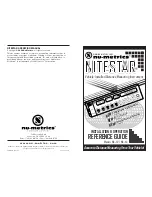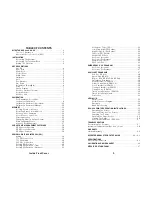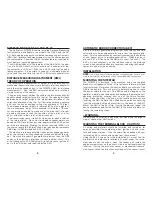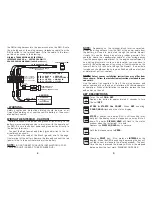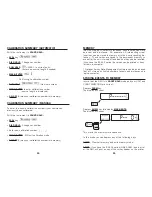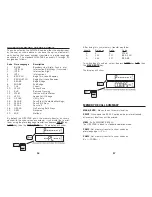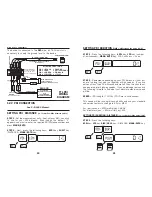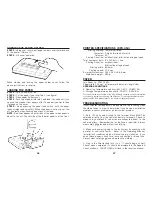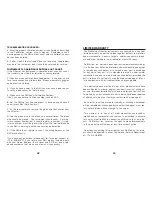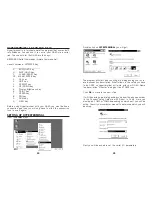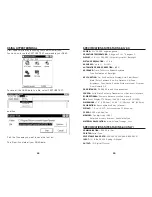
CHANGING MEMORY OUTPUT FORMAT
The code output by the NITESTAR can be either the number input
by the user as shown above or you have the option of automati-
cally having that event number translated to a plain language
description. The standard NITESTAR has events 1 through 20
assigned as follows:
Code
Plain Language
Description
1
B.LINE
Boundary Line (State, County, etc.)
2
INT B/W
Intersection Both Ways (Crossroad)
3
INT R
Intersection Right
4
INT L
Intersection L
5
BEG 2 LN
Begin Two Lane Roadway
6
BEG MULT LN
Begin Multi-Lane Roadway
7
BEG BR
Begin Bridge
8
END BR
End Bridge
9
CUL
Culvert
10
SCH.Z
School Zone
11
RxR
Railroad Crossing
12
STA.M
Station or Mile Marker
13
SPD.L
Speed Limit Change
14
U.POLE
Utility Pole
15
PASS.R
Pass Right (Centerline Markings)
16
PASS.B
Pass Both Ways
17
PASS.L
Pass Left
18
N.PASS
No Passing Both Ways
19
DRW
Driveway
20
M/B
Mailbox
By default the NITESTAR prints the memory transfer as shown
above with the code values as numbers. If you would like to print
them using the plain language translations depress
9PRM
key,
2UNIT
key, then the
MARK/ENTR
key. The display will show:
16
After doing this your memory transfer would be:
Event#
Distance
Delta
Code
1.
0
0
STA.M
2.
123
123
BEG 2 LN
3.
241
117
BEG BR
To switch back to code # output, depress
9PRM
key,
3PD
, then
the
MARK/ENTR
key.
The display will show:
MEMORY RECALL SUMMARY
MARK/ENTR
: Moves to next memory location.
: If you have the RS-232 option and a printer attached,
all memory locations will be printed.
VIEW
: Exits MEMORY RECALL.
The NITESTAR is back to standard operation mode.
PGM2
: Set memory transfer to show codes as
plain language (—PL—)
PGM3
: Set memory transfer to show codes as
#’s (—CODES—)
17

